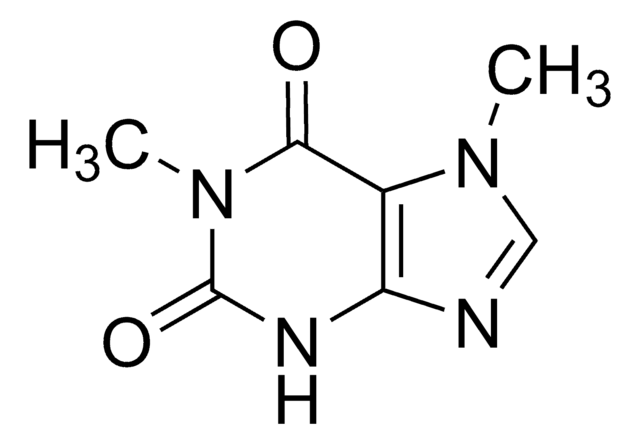17-10061
ChIPAb+ E2F-1 - ChIP Validated Antibody and Primer Set
from mouse
Synonym(s):
Transcription factor E2F1, Retinoblastoma-binding protein 3, PRB-binding protein E2F-1
Sign Into View Organizational & Contract Pricing
All Photos(3)
About This Item
UNSPSC Code:
12352203
eCl@ss:
32160702
NACRES:
NA.52
Recommended Products
General description
All ChIPAb+ antibodies are individually validated for chromatin precipitation, every lot, every time. Each ChIPAb+ antibody set includes control primers (tested every lot by qPCR) to biologically validate your IP results in a locus-specific context. The qPCR protocol and primer sequences are provided, allowing researchers to validate ChIP protocols when using our antibody in their chromatin context. Each set also includes a negative control antibody to ensure specificity of the ChIP reaction.
The ChIPAb+ E2F-1 set includes the E2F-1 antibody, a negative control normal mouse IgG, and qPCR primers which amplify a 100 bp region of human CDC2 promoter. The E2F-1 and negative controls are supplied in a scalable "per ChIP" reaction size and can be used to functionally validate the precipitation of E2F-1-associated chromatin.
The ChIPAb+ E2F-1 set includes the E2F-1 antibody, a negative control normal mouse IgG, and qPCR primers which amplify a 100 bp region of human CDC2 promoter. The E2F-1 and negative controls are supplied in a scalable "per ChIP" reaction size and can be used to functionally validate the precipitation of E2F-1-associated chromatin.
Specificity
The epitopes have been mapped to amino acids 1-89 and to amino acids 342-386.
Immunogen
Epitope: a.a. 1-89 & 342-386
Application
Chromatin Immunoprecipitation:
Representative lot data.
Sonicated chromatin prepared from HeLa cells (1 X 10E6 cell equivalents per IP) were subjected to chromatin immunoprecipitation using 1 µL of either Normal Mouse IgG or 1 µL of Anti-E2F-1 and the Magna ChIP G Kit (Cat. # 17-611).
Successful immunoprecipitation of E2F-1-associated DNA fragments was verified by qPCR using ChIP Primers, human CDC2 promoter as a positive locus, and an intergenic region near human CALML5 as a negative locus. (Please see figures). Data is presented as percent input of each IP sample relative to input chromatin for each amplicon and ChIP sample as indicated.
Please refer to the EZ-Magna ChIP G (Cat. # 17-409) or EZ-ChIP (Cat. # 17-371) protocol for experimental details.
Western Blot Analysis:
Representative lot data.
HeLa nuclear extract was resolved by electrophoresis, transferred to PVDF and probed with Anti-E2F-1 (1.0 µg/mL).
Proteins were visualized using a goat anti-mouse secondary antibody conjugated to HRP and a chemiluminescence detection
system.
Arrow indicates E2F-1 (~55 kDa) (Please see figures).
Immunoprecipitation: 4 μg of a previous lot of this antibody immunoprecipitated E2F-1 from HeLa nuclear extract.
Electrophoretic Mobility Shift Assay (EMSA): A previous lot of the antibody has been shown to gel shift the E2F-1/DP-1/DNA complex.
Representative lot data.
Sonicated chromatin prepared from HeLa cells (1 X 10E6 cell equivalents per IP) were subjected to chromatin immunoprecipitation using 1 µL of either Normal Mouse IgG or 1 µL of Anti-E2F-1 and the Magna ChIP G Kit (Cat. # 17-611).
Successful immunoprecipitation of E2F-1-associated DNA fragments was verified by qPCR using ChIP Primers, human CDC2 promoter as a positive locus, and an intergenic region near human CALML5 as a negative locus. (Please see figures). Data is presented as percent input of each IP sample relative to input chromatin for each amplicon and ChIP sample as indicated.
Please refer to the EZ-Magna ChIP G (Cat. # 17-409) or EZ-ChIP (Cat. # 17-371) protocol for experimental details.
Western Blot Analysis:
Representative lot data.
HeLa nuclear extract was resolved by electrophoresis, transferred to PVDF and probed with Anti-E2F-1 (1.0 µg/mL).
Proteins were visualized using a goat anti-mouse secondary antibody conjugated to HRP and a chemiluminescence detection
system.
Arrow indicates E2F-1 (~55 kDa) (Please see figures).
Immunoprecipitation: 4 μg of a previous lot of this antibody immunoprecipitated E2F-1 from HeLa nuclear extract.
Electrophoretic Mobility Shift Assay (EMSA): A previous lot of the antibody has been shown to gel shift the E2F-1/DP-1/DNA complex.
This ChIPAb+ E2F-1 -ChIP Validated Antibody & Primer Set conveniently includes the antibody & the specific control PCR primers.
Quality
Chromatin Immunoprecipitation:
Sonicated chromatin prepared from HeLa cells (1 X 10E6 cell equivalents per IP) were subjected to chromatin immunoprecipitation using 1 µL of either Normal Mouse IgG or 1 µL of Anti-E2F-1 and the Magna ChIP® G Kit (Cat. # 17-611).
Successful immunoprecipitation of E2F-1 associated DNA fragments was verified by qPCR using ChIP Primers, human CDC2 promoter (Please see figures).
Please refer to the EZ-Magna ChIP G (Cat. # 17-409) or EZ-ChIP (Cat. # 17-371) protocol for experimental details.
Sonicated chromatin prepared from HeLa cells (1 X 10E6 cell equivalents per IP) were subjected to chromatin immunoprecipitation using 1 µL of either Normal Mouse IgG or 1 µL of Anti-E2F-1 and the Magna ChIP® G Kit (Cat. # 17-611).
Successful immunoprecipitation of E2F-1 associated DNA fragments was verified by qPCR using ChIP Primers, human CDC2 promoter (Please see figures).
Please refer to the EZ-Magna ChIP G (Cat. # 17-409) or EZ-ChIP (Cat. # 17-371) protocol for experimental details.
Target description
~55 kDa
Physical form
Anti-E2F-1 (mouse monoclonal). One vial containing 25 µg of protein G purified monoclonal mixed IgG in 25 µL of buffer containing 0.1 M Tris-glycine, pH 7.4, 0.15 M NaCl with 0.05% sodium azide. Frozen solution. Store at -20°C.
Nornal Mouse IgG. One vial containing 25 µg of purified IgG in 25 µL of storage buffer containing 0.1% sodium azide. Store at -20°C.
ChIP Primers, CDC2 promoter. One vial containing 75 μL of 5 μM each primer specific for human CDC2 promoter. Store at -20°C.
FOR: CGC CCT TTC CTC TTT CTT TC
REV: ATC GGG TAG CCC GTA GAC TT
Nornal Mouse IgG. One vial containing 25 µg of purified IgG in 25 µL of storage buffer containing 0.1% sodium azide. Store at -20°C.
ChIP Primers, CDC2 promoter. One vial containing 75 μL of 5 μM each primer specific for human CDC2 promoter. Store at -20°C.
FOR: CGC CCT TTC CTC TTT CTT TC
REV: ATC GGG TAG CCC GTA GAC TT
Format: Purified
Analysis Note
Control
Includes negative control normal mouse IgG and primers specific for human CDC2 promoter.
Includes negative control normal mouse IgG and primers specific for human CDC2 promoter.
Legal Information
MAGNA CHIP is a registered trademark of Merck KGaA, Darmstadt, Germany
UPSTATE is a registered trademark of Merck KGaA, Darmstadt, Germany
Storage Class Code
10 - Combustible liquids
Certificates of Analysis (COA)
Search for Certificates of Analysis (COA) by entering the products Lot/Batch Number. Lot and Batch Numbers can be found on a product’s label following the words ‘Lot’ or ‘Batch’.
Already Own This Product?
Find documentation for the products that you have recently purchased in the Document Library.
Yao Yao et al.
Blood, 141(23), 2841-2852 (2023-03-07)
Therapeutic targeting of CDK7 has proven beneficial in preclinical studies, yet the off-target effects of currently available CDK7 inhibitors make it difficult to pinpoint the exact mechanisms behind MM cell death mediated by CDK7 inhibition. Here, we show that CDK7
Amanda Oliveira et al.
Laboratory investigation; a journal of technical methods and pathology, 95(6), 648-659 (2015-04-22)
Despite significant progress in diagnostics and therapeutics, over 50 thousand patients die from colorectal cancer annually. Hence, there is urgent need for new lines of treatment. Triptolide, a natural compound isolated from the Chinese herb Tripterygium wilfordii, is effective against
Jing Wen et al.
EBioMedicine, 37, 110-124 (2018-10-27)
Dysregulation of the cell cycle has been implicated in esophageal squamous cell carcinoma (ESCC) progression. This study aimed to evaluate the role of miR-424 in cell cycle regulation and ESCC proliferation. The role of miR-424 in cell proliferation was evaluated
A Giro-Perafita et al.
NPJ breast cancer, 6, 1-1 (2020-01-15)
Long non-coding RNAs (lncRNAs) play key roles in the regulation of breast cancer initiation and progression. LncRNAs are differentially expressed in breast cancer subtypes. Basal-like breast cancers are generally poorly differentiated tumors, are enriched in embryonic stem cell signatures, lack
Jing Xu et al.
Frontiers in oncology, 10, 530933-530933 (2021-01-29)
The aim of this study was to investigate the role of KIF26A in breast cancer. qRT-PCR and immunohistochemistry were conducted to explore KIF26A expression and functional contribution to breast cancer development. MTS, EDU, colony formation assays, and flow cytometry analysis
Our team of scientists has experience in all areas of research including Life Science, Material Science, Chemical Synthesis, Chromatography, Analytical and many others.
Contact Technical Service





![GAL4 [(1-147) - AH] from Saccharomyces cerevisiae recombinant, expressed in E. coli, ≥80% (SDS-PAGE)](/deepweb/assets/sigmaaldrich/product/images/174/140/27ccc70c-c146-4db8-888e-496728638bd2/640/27ccc70c-c146-4db8-888e-496728638bd2.jpg)


